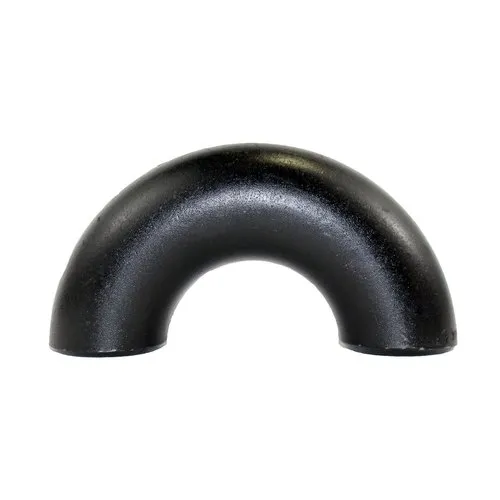-
Cangzhou Yulong Steel Co., Ltd.
-
Phone:
+86 13303177267 -
Email:
admin@ylsteelfittings.com
- English
- Arabic
- Italian
- Spanish
- Portuguese
- German
- kazakh
- Persian
- Greek
- French
- Russian
- Polish
- Thai
- Indonesian
- Vietnamese
- Zulu
- Korean
- Uzbek
- Hindi
- Serbian
- Malay
- Ukrainian
- Gujarati
- Haitian Creole
- hausa
- hawaiian
- Hebrew
- Miao
- Hungarian
- Icelandic
- igbo
- irish
- Japanese
- Javanese
- Kannada
- Khmer
- Rwandese
- Afrikaans
- Albanian
- Amharic
- Armenian
- Azerbaijani
- Basque
- Belarusian
- Bengali
- Bosnian
- Bulgarian
- Catalan
- Cebuano
- China
- China (Taiwan)
- Corsican
- Croatian
- Czech
- Danish
- Esperanto
- Estonian
- Finnish
- Frisian
- Galician
- Georgian
- Kurdish
- Kyrgyz
- Lao
- Latin
- Latvian
- Lithuanian
- Luxembourgish
- Macedonian
- Malgashi
- Malayalam
- Maltese
- Maori
- Marathi
- Mongolian
- Myanmar
- Nepali
- Norwegian
- Norwegian
- Occitan
- Pashto
- Dutch
- Punjabi
- Romanian
- Samoan
- Scottish Gaelic
- Sesotho
- Shona
- Sindhi
- Sinhala
- Slovak
- Slovenian
- Somali
- Sundanese
- Swahili
- Swedish
- Tagalog
- Tajik
- Tamil
- Tatar
- Telugu
- Turkish
- Turkmen
- Urdu
- Uighur
- Welsh
- Bantu
- Yiddish
- Yoruba

Nov . 09, 2024 15:36 Back to list
Overview of API 5L PSL2 Specification for Steel Line Pipes
Understanding the API 5L PSL2 Specification
The API 5L specification is a critical standard published by the American Petroleum Institute (API) that outlines the technical requirements for the manufacture of line pipe. This specification is particularly essential in the oil and gas industry, where the transportation of fluids through pipelines is of paramount importance. Within this specification, PSL2 (Product Specification Level 2) plays a vital role, as it delineates additional requirements that cater to various environmental conditions and enhance the pipe's overall performance.
Overview of API 5L
API 5L primarily focuses on the steel pipes used for transporting hydrocarbons, including oil and gas. The specification categorizes pipes into different grades, with each grade denoting specific chemical and mechanical properties tailored to various transmission requirements. This ensures that the pipeline installations maintain integrity and safety even under high pressure and various environmental challenges.
What is PSL2?
PSL2 represents a higher grade within the API 5L standard, designed to include stricter chemical and mechanical properties than PSL1 (Product Specification Level 1). While PSL1 is the baseline standard offering essential specifications for pipe quality, PSL2 introduces more rigorous testing and inspection details, making it suitable for more demanding applications.
Key Features of API 5L PSL2
1. Chemical Composition PSL2 pipes generally have more stringent requirements for their chemical composition. This includes tighter controls on carbon content, sulfur, phosphorus, and other elements that can affect the steel's strength and durability.
2. Mechanical Properties The mechanical requirements in PSL2 are also more robust. This includes properties such as yield strength, tensile strength, and elongation. This means that PSL2 pipes are designed to withstand more severe pressure and stress, making them suitable for high-demand applications.
api 5l psl2 specification

3. Testing Requirements API 5L PSL2 necessitates rigorous testing standards that go beyond those for PSL1. This includes non-destructive testing (NDT) methods such as ultrasonic testing (UT) and radiographic testing (RT) to ensure the integrity and quality of the pipes.
4. Impact Testing For steel pipe intended for use in low-temperature service, PSL2 requires Charpy V-notch impact testing to ensure the material's toughness in cold conditions. This is vital for applications in regions that experience extreme weather.
5. Welding Requirements PSL2 maintains strict guidelines concerning welding, ensuring that the integrity of the joint is not compromised. The specification outlines the necessary materials and techniques for welding to ensure safety and reliability in pipeline operations.
Applications of API 5L PSL2
API 5L PSL2 pipes are utilized across various sectors of the oil and gas industry, including
- Transmission Pipelines Used in long-distance transport of oil and gas, where the integrity of the pipeline is paramount. - Distribution Networks Ensuring safe and efficient delivery of hydrocarbons to refineries and distribution centers. - Offshore and Onshore Drilling Providing a dependable means to transport extracted materials back to shore or to processing facilities.
Conclusion
The API 5L PSL2 specification is an essential framework that provides the necessary guidelines for manufacturing high-quality steel pipes for the oil and gas industry. Through its rigorous standards on chemical composition, mechanical properties, and testing requirements, PSL2 ensures that pipelines are robust enough to withstand challenging conditions. As the demand for energy continues to rise and as exploration ventures into more extreme environments, the relevance of API 5L PSL2 grows, driving the need for safe, reliable, and efficient pipeline solutions. By adhering to these specifications, industry stakeholders can better manage risks and ensure the longevity and performance of their pipeline systems.
Latest news
-
ANSI 150P SS304 SO FLANGE
NewsFeb.14,2025
-
ASTM A333GR6 STEEL PIPE
NewsJan.20,2025
-
ANSI B16.5 WELDING NECK FLANGE
NewsJan.15,2026
-
ANSI B16.5 SLIP-ON FLANGE
NewsApr.19,2024
-
SABS 1123 FLANGE
NewsJan.15,2025
-
DIN86044 PLATE FLANGE
NewsApr.19,2024
-
DIN2527 BLIND FLANGE
NewsApr.12,2024
-
JIS B2311 Butt-Welding Fittings LR/SR 45°/90° /180°Seamless/Weld
NewsApr.23,2024











